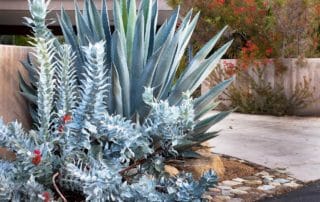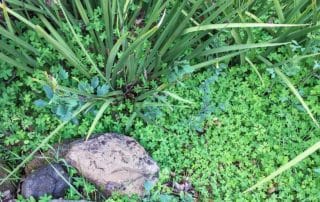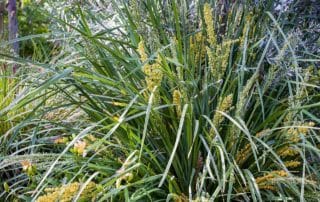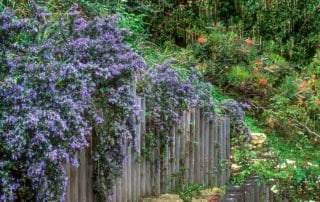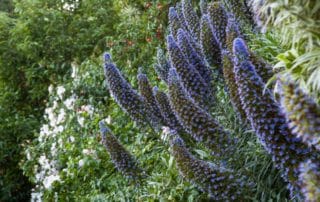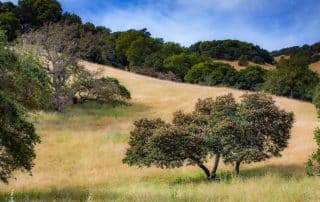Eucalyptus macrocarpa (mottlecah)
With its large, tightly packed, silvery bluish white, mint-scented leaves and outsized, scarlet, pink, or rarely yellow flowers, this shrubby eucalyptus brings show-stopping drama to almost any summer-dry garden. Its features are decisively eucalypt, but its effect, especially at full height and in full bloom, is Alice-in-Wonderland. Eucalyptus macrocarpa can be pruned to maintain it at almost any size. Here it combines perfectly with Agave americana. One of several Australian shrubs called desert mallee, mottlecah can reach eight to ten feet tall and wide, sometimes erratically upright but more often sprawling. Mallees are shrubby eucalypts native primarily


